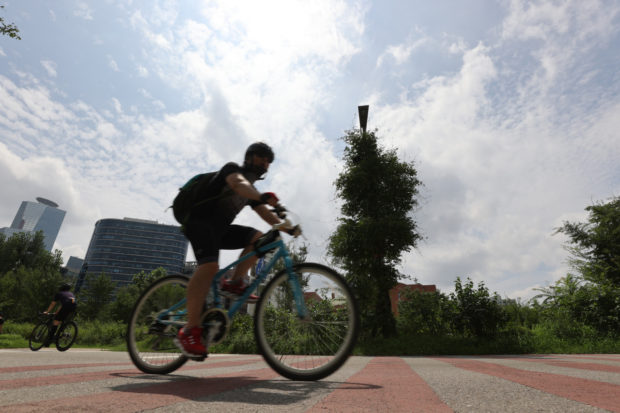SEOUL — The national weather agency on Monday issued special warnings for heat waves in most parts of Korea, following heavy monsoon rains that caused casualties.
The hot and humid southwestern winds joined the North Pacific High, a semipermanent, subtropical anticyclone, around the edges overnight, causing temperatures to rise to tropical levels across Korea, except in some inland areas.
The lowest night temperatures marked as of 7 a.m. were 26.1 degrees Celsius in Seoul; 25.7 C in Suwon, Gyeonggi Province; 28.3 C in Gangneung, Gangwon Province; 26 C in Cheongju, North Chungcheong Province; 25.9 C in Yeosu, South Jeolla Province; 25.4 C in Gwangju; 26.8 C in Busan; 25.3 C in Daegu and 27 C for Jeju Island, according to the Korea Meteorological Agency.
When temperatures remain above 25 degrees from 6 p.m. through 9 a.m. the next day, the phenomenon is referred to as a tropical night here.
Special warnings for scorching heat waves have been issued in most regions, including Daejeon, Gwangju, Busan, Daegu, Gangwon Province, the North and South Chungcheong, Jeolla and Gyeongsang provinces and Jeju Island.
Special advisories for heat waves have been issued in most other regions, such as Seoul.
Heat wave warnings are issued when daily high temperatures are expected to stay above 35 degrees for two or more consecutive days, or heat waves are projected to yield severe damage.
Heat wave advisories are issued when daytime highs are likely to stay above 33 degrees for two or more days in a row, or the high temperatures are likely to cause major damage.
The KMA said it will be very hot this week, with daytime highs rising above 33 degrees in many regions, and above 35 degrees on the eastern coast of Gangwon Province, the North and South Chungcheong provinces, southern regions and Jeju Island.
The weather agency warned that people will feel hotter than the actual temperatures due to high humidity, and advised caution to prevent industrial damage in agriculture, livestock and other sectors.
